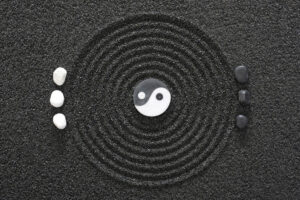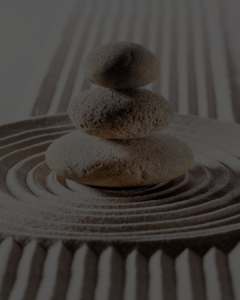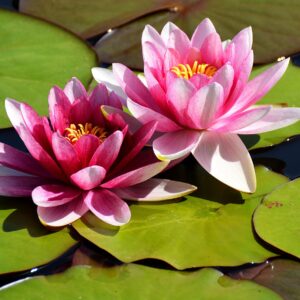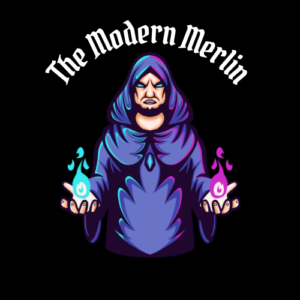The Modern Merlin’s Summer Reading List: Lessons, Perspective Shifts, Transformation and Impermanence
Hello friends! I know it’s been a hot minute since you’ve last heard from me, and I do apologize for that. To be honest, I hit a moment of deep inner change, one that I’m still not completely out of. During this process of change, I came to realize that returning to my roots in Buddhism and Taoism wasn’t enough; I had to apply those practices in my daily life, something that I still struggle with, and likely will for the remainder of my time in this life. That’s not to say that it isn’t worth it; in my view, it’s well worth it to be mindful, live in the present moment, and seek enlightenment, compassion and integrity in everything you do. However, as is so often the case, anything worth having in life requires constant work; in this case, constant practice. Let’s face it, life is difficult as is, and then you add on the societal stressors we in the U.S. are currently facing.
I won’t get into politics, and instead refer you to my substack for my latest thoughts on recent events there; but the politics do tie into what I’m writing on here.
Anger is a common emotion we all feel. Watch the news, read a news article, even certain TV programs or sports games can get people worked up. Then add in the interpersonal shit we all deal with in our day-to-day lives, and it’s no wonder our society is in such distress on every level. I’ve decided to take my spiritual roots in Taoism, Zen Buddhism and a few lessons from Hinduism and apply them to all the different facets of life that may anger me, or depress me, or what have you. I’m sharing my reading list of books from this summer that I either bought, rented, or swapped at a local used bookstore, all relating to Zen Buddhism and Taoism, in hopes that not only will these titles help others who may feel overwhelmed, but also to garner some understanding for those not as familiar with these philosophies as I am (and I don’t profess to be a Taoist or Zen master by any means).
These philosophies and practices can enhance any witchcraft or pagan practice, as Taoism and Zen are merely philosophies, they don’t seek to explain the creative or divine forces of the world and universe, but rather seek control of the self, which is the universe experiencing its own creation. Mind blowing, right?
The Bhagavad Gita
We are the Universe experiencing itself
So many people who have done visionary work, trance work, or any amount of deep meditation have said essentially the same as above. Because we are all part of the universe, we are thus the universe experiencing its self; we are experiencing constantly the cycle of life, death and eventual rebirth. To borrow from science, energy cannot be destroyed nor created. When we die, our bodies decompose and thus nurture the soil that will sustain future generations.
Looking at this from a less morbid point of view, everything that we experience is thus self-created. For witches, this is assuring; this means we can create our reality. Of course, we can’t change everything; certainly we can’t make it so our least favorite politicians aren’t in office anymore, nor can we bring someone back from the dead. But what we can change is our perspective: we must see everything as interconnected. Your actions will affect the web of life regardless if it’s intentional or not; proceed mindfully in creating your new reality. Fate can be changed, but there are consequences.
The War Within Reflects The War Without
Each of us-you, me, your neighbor, your significant other-is at war. With ourselves. On a larger scale, humanity is at war with itself; we see this in the Middle East, Eastern Europe, Asia, even in our own country we’re seeing this play out. Dualism can serve a purpose, if we allow it. Thinking back on my earlier article on Taoism, which can be found here, the yin-yang principle can be used to bring each of us into balance. Within the pagan community, and even at large, there is a growing rejection of dualism. While I don’t disagree entirely, seeing things like Gender and Good vs. Evil as pretty much outdated, archaic ways of thinking that don’t fit our modern world, dualism in this sense can be of use. We’re each at war with the Yin principle-our darkest self, our hidden fears, our traumas. What we want vs. what we get. Resentment, anger and hatred breed from this conflict, and it can quickly overpower the Yang, or light principle.
Winning the war within is the first step to achieving peace on a larger scale. And to win that war within, we mustn’t eradicate the darker or Yin self; no, we must instead embrace it, love it, and nurture it. View the Yin or Dark self as a garden of what most westerners would call “weeds”. Really, they’re plants that serve a purpose in the ecosystem, but they cannot be tamed, and are thus viewed as pests. Tending these plants, or the Yin self, will allow it to become something truly beautiful, useful and natural. Once we begin tending our Yin garden, we can transform that anger (the weeds) into something that allows the plants around it to thrive, and the animals, too. Keep this particular sentiment in mind for our next book.
Anger: Wisdom for Cooling the Flames and other Thich Nhat Hanh works
Anger. We all feel it; some more than others. I’m sure I’m not alone when I say that the current political climate in the U.S. pisses me off, a lot. We have to find a way to cope, lest it destroy us all, and that does no one any good. Anger is one of the three roots of suffering, or “dukkha” in buddhism. Anger can form itself into many ugly things: hatred, bias, prejudice, rage, the list goes on. It’s not healthy for us to be angry all the time.
Thich Nhat Hanh delivers gems of wisdom in his works, but Anger really stuck with me. First, we must come to terms with our anger. It’s okay to feel anger; it’s only natural, part of the human experience. What matters is how we deal with it. I’d like to offer my own experience utilizing one simple practice: mindfulness-to illustrate how we can not only cope with our anger, but transmute it into something useful.

My Anger from Youth
I didn’t have a particularly easy life growing up; I lived in an abusive home, and it’s affected me in numerous ways that I still deal with to this day. Instead of allowing my anger with those circumstances to embitter me, and let my inner garden die, this summer I chose to face it head on. What happened wasn’t right, and no, I shouldn’t have had to have gone through all that I did. But nothing can change that now; now, it’s up to me, and only me, to transmute that anger. To change its form from a volatile compound into one that can be of use in some aspect of my life. This, paired with therapy, has allowed me to begin that work.
It’s an ongoing process and I certainly don’t profess to be perfect. As I write this now, I can admit that today was the first time I’ve sat my butt down and meditated in about a month. For the things that I must release, I use my Leaf in the Stream meditation that I mentioned in my last article. Another practice that has been of use in my dealings with anger-no matter the source-has been mindfulness.
Mindfulness puts you back in the present moment, no matter what you’re doing. Mindful walking, mindful eating, mindful talking, mindful breathing, the list goes on. Being present eliminates a lot of dukkha in our lives. Often, when we’re experiencing suffering (dukkha), we’re living in the past, and sometimes the future for those of us with anxiety. When we live in any moment besides the here and now, we allow our mind to shift our reality into one that no longer serves us, or has yet to come, if at all. Try eating mindfully, breathing mindfully, walking mindfully, or doing anything with no thoughts other than what you’re experiencing currently. At its’ core, this is mindfulness; and it can be of great use to many of us as we face uncertain and frankly scary times.
Zen and the Art of Happiness
Happiness is not a fleeting state; on the contrary, when we come to view that everything that happens in our lives is leading us to the best outcome, we experience a state of bliss that not many have experienced. I’m not saying it’s always going to be rainbows and butterflies, but if we can shift our perspective to see everything that happens in our lives-good, bad, or indifferent-as working towards our best outcome, then we can begin to shift the drudgery of daily life.
To dramatically (and respectfully) illustrate this idea, take, for instance, the multiple anecdotes of folks who missed their flights on 9/11/2001. Sure, it was frustrating in that moment, but I can assure you none of those people think it worked out in any other way than their best interest. Without giving too much of this book away (I gotta keep something for you to read), I hope to impart even the slightest shift in perspective to those who could benefit from it. Come to see everything as working in your best interest, and you will experience a shift in your reality unlike any other you’ve felt before.
Zen Mind, Beginner’s Mind
Wouldn’t we all like to wipe the slate clean in our minds? Get all the junk off our minds, and just relax? Approaching mindfulness and meditation with a beginner’s mind, or empty mind, free of all the trappings and webs of thought of our normal state and instead only experience what is occurring around us in the present. While this book is more instructional in the traditional art of Japanese Zen, there is one bit of wisdom that I’d like to impart from its pages that I found of particular import, and it may really help those who struggle with meditation.

Holding the Lotus
We all know what Lotus position is: the traditional meditation pose. Part of that pose requires “holding the lotus” in each hand. This serves a purpose, and has helped me reach a state of calm and equilibrium in my most agitated states as I try to embody mindfulness. When we view in our mind’s eye a lotus in each hand, that we’re holding, it allows us to focus on something other than what’s on our mind and causing suffering in the present. That “lotus” is fragile, and to keep it upright requires delicacy, constancy and concentration. Use this metaphorical Lotus as a starting point for focus that can then bridge into a practice of mindfulness and meditation.
Putting it all together: Calming the Flames of Anger and Suffering, Resolving the War Within, and Realizing the True Nature of Reality
Putting all of these concepts and practices together, we can start to map out a way out of our suffering. Suffering is the root of the negative parts of human experience. Zen Buddhist Masters have been jokingly called “Doctors of Dukkha” as one of my college philosophy professors put it, and for good reason. Resolving suffering, whether internal, interpersonal, or from experiences like trauma, and even larger, world-scale events, can not only bring us back to ourselves, but can also be the formula, or part of the formula, for a more peaceful world and society. I’d like to use the remainder of this article to guide you each through a meditation that will allow you to feel whatever it is that’s naturally occurring within you, release and transmute it, and return to the here & now, your center. Reality is what we make it. From the center, from a state of mindfulness, we can craft a new reality or a better one that makes us happy, fulfilled and at peace.
A Meditation to Relieve Suffering
Begin by turning off the TV, putting your phone on DND, and silencing any other distractions. You may play a meditation playlist if you wish; I find them helpful personally. Take three deep breaths, and focus on this moment. Now, move into the Lotus position, or a half (seated) lotus position if the full lotus is too hard. The main part of import is the lotus in each hand that we discussed earlier. Bring your attention to each hand, each lotus. Hold it delicately, but firmly. Continue taking deep breaths: in through your nose, out through your mouth. If there’s a lot of tension, push each breath out with force to release whatever tension is there. If your breath is shaky, that’s fine; allow it to be. Focus only on the here and now. Your breathing. The Lotuses.
Now, close your eyes. Begin to see yourself at the bank of a stream; there are leaves floating in it. Each leaf carries a feeling-anger, sadness, love, joy, etc. Allow each leaf to float on by, feeling each emotion as it comes, and letting it go, realizing that nothing is permanent-whether happiness or despair, anger or love. Continue to do this until you feel you’re done. There’s no right or wrong way or time to feel these things; there simply is the act of feeling them, and allowing them to cease as each leaf floats on by out of sight further down the stream.
Once you’ve experienced the leaves in the stream, return your mind’s attention to the Lotus you hold in each hand. See the transformation in each of them-from mud to beautiful blossom. This symbolizes the transmutation of our suffering; those leaves nourished the soil that created the Lotuses in our hands. Those same feelings of anger, joy, hate, love, sadness and all the other emotions we as humans experience in life-nurtured this beautifully transformed flower. Remember the Lotus each time you feel overwhelmed by life and its feelings. Return here whenever needed. It’s always waiting for you. True sanctuary is within. You are the Lotus and the Lotus is you.
Begin returning your attention to your breathing, and begin wiggling your toes and moving around slightly, returning your awareness to the here and now. Continue breathing deeply until you feel you no longer need to. And remember you can always return here whenever needed.

The Modern Merlin’s Summer 2025 Reading List
I’d be remiss not to include the books that influenced this article, and I hope that you find wisdom, peace and enlightenment in whichever ones you choose to pursue.
- Anger: Wisdom for Cooling the Flames by Thich Nhat Hanh
- The Pocket Thich Nhat Hanh
- Taming The Tiger Within: Meditations on Transforming Difficult Emotions by Thich Nhat Hanh
- Zen and the Art of Happiness by Chris Prentiss
- Zen Mind, Beginner’s Mind by Shunryu Suzuki
- The Bhagavad Gita translated by Eknath Easwaran
- Tao Te Ching by Lao Tzu
- The I Ching, or Book of Changes translated by Brian Browne Walker
- Taoism: An Essential Guide by Eva Wong
- 365 Tao: Daily Meditations by Deng Ming-Dao
- Everyday Tao by Deng Ming-Dao
A long list, but I love to read! I hope that these provide insight and that my article and synthesis of these ideas and practices has helped some of you cope with the various hurdles that suffering provides us. I hope that you’re able to transmute some of that suffering and that you can see the applications to your Witchcraft or spiritual practices. Make sure to drop me a line and let me know your thoughts!
***
Author Bio:

The Modern Merlin is a Polytheist, Pagan, Animist, Witch, Sorcerer, Chaos Magician and Occultist. He embarked on his spiritual and magickal journey over 15 years ago. As such, he has extensive knowledge of The Occult, Ceremonial Magick, Chaos Magick, Witchcraft, Sorcery, and both modern and ancient world religions and folklore. He is a practicing Sorcerer, blending ceremonial high magick, chaos magick and witchcraft, as well as plant medicine, poisonous plants and entheogens, shamanic techniques, and mysticism. He believes that magick can be as simple or as complex as one needs it to be, and rejects dogma, instead trusting his intuition, and encourages other magickal and spiritual folks to do the same! He venerates and casts magick with a wide array of spirits and deities, and works with both the Left and Right Hand Paths, having experience in both. He has also studied eastern philosophies such as Taoism, Zen Buddhism, and Hinduism. He is an Astrologer and Tarot reader and actively studies and practices many other forms of divination including Runes, Ogham, Palmistry and Scrying. An animal lover, he sees divinity in nature-the trees, plants, animals and sky. Also an avid reader, you’re hard pressed to not find him nose deep in a book, most likely on an occult, mystical, religious or magickal subject. He is the Co-Editor of PaganPages.Org and the author of multiple columns for PaganPages.Org. He gives readings and other spiritual services through his Facebook Page, The Modern Merlin, as well other free informational posts for everyone to see! You can reach him on Facebook, or e-mail him at [email protected]




